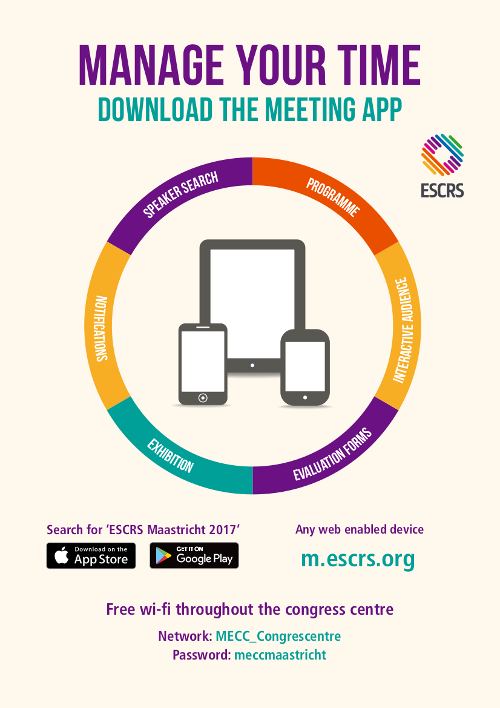Femtosecond laser-assisted implantation of toric MIOL based on automated corneal shape analysis in comparison with a manual technique
(results will display both Free Papers & Poster)
Session Details
Session Title: Cataract
Session Date/Time: Saturday 11/02/2017 | 08:30-11:00
Paper Time: 08:42
Venue: Auditorium 1
First Author: A.Osinga GERMANY
Co Author(s): D. Breyer H. Kaymak K. Klabe P. Hagen F. Kretz G. Auffarth
Abstract Details
Purpose:
By corneal shape analysis combined with iris detection the preoperatively measured steep corneal axis can be marked during cataract surgery by a femtosecondlaser in a way that compensates cyclorotation. Using these landmarks in aligning the toric IOL this new technique aims for a better correction of astigmatism during femtosencondlaser-assisted cataract surgery (FLACS).
The aim of this retrospective analysis was to compare the astigmatic outcome of this new approach with a manual technique in consequtive cases without selection.
Setting:
All considered eyes underwent cataract surgery or refractive lens exchange with a bifocal toric Comfort IOL (+1.5D addition, Oculentis) and all implantations were performed at the Breyer-Kaymak-Klabe Eyesurgery in Duesseldorf, Germany.
Methods:
We compared the results of two groups:
A) eyes that underwent FLACS with the implantation axis aligned by corneal shape analysis combined with automated iris registration using the wireless streamline data link between Cassini (i-Optics) and LensAR with IntelliAxis (Topcon) (35 eyes)
B) eyes treated with the manual technique: YAQ laser epithelial marking of the horizontal axis and alignment of the toric IOL via a screen transparency (30 eyes).
We measured manifest refraction and evaluated the reduction of astigmatism using the vector-based Alpins method. Results for magnitude of error, angle of error, correction index and index of success were compared.
Results:
The correction index in group A and B was 1.0+-0.3 and 1.1+-0.3 and the index of success was 0.3+-0.3 and 0.3+-0.4, respectively.
Conclusions:
From our data analysis we see only slight advantages in the reduction of astigmatism in the group with FLACS and automated compensation of cyclorotation. The differences between both groups were not significant, whereas data transfer, workflow and prevention of read-off errors is better with IntelliAxis.
Financial Disclosure:
receives consulting fees, retainer, or contract payments from a company producing, developing or supplying the product or procedure presented, travel has been funded, fully or partially, by a competing company, travel has been funded, fully or partially, by a company producing, developing or supplying the product or procedure presented, receives consulting fees, retainer, or contract payments from a competing company



